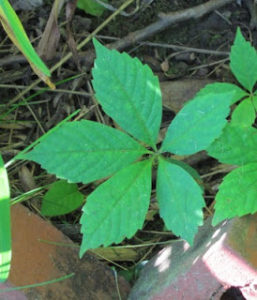Most of the time, names arise mysteriously out of the collective creativity of language. Common names for plants and animals are a very rich source of information about them and their history of interaction with humans. One inspiration for this blog was a desire to learn where names like wormwood, sassafras, and lungwort came from. However, they have their limits. Is your moonflower or ironwood the same as mine? Maybe, maybe not. And consider things like Spanish moss, which is neither native to Spain nor a moss.
When scientists communicate with each other, they require clarity and a shared understanding of the names and categories of the things they talk about. Various professional societies for scientists have naming commissions or other bodies that agree on nomenclature in that field. For example, it was the International Astronomical Union that decided that Pluto is a dwarf planet. Although this demotion caused consternation in some circles, it wasn’t anything personal. It just reflects the current understanding of the contents of the solar system better. The idea is essentially to use the same name only for objects that not only resemble each other superficially, but that share deeper similarities and perhaps an evolutionary history.
The ultimate example of precision naming may be the binomial nomenclature used to give consistent names to plants and animals. Each name indicates the organism’s genus and species. The species name often reflects something about the organism (a word describing its appearance, say, or the name of the person who identified it as a species). Virginia creeper, for example, goes by Parthenocissus quinquefolia; it belongs to the genus Parthenocissus, and quinquefolia refers to the fact that the leaves (the folia bit) appear in groups of five (the quinque bit). In this blog, we’ll learn about how the genus names were established and also about some of the scientists and explorers whose names live on in scientific names.

As we learn more about the evolutionary history of an animal or a plant, the scientific name may change. Again, the goal is to group objects that truly are related in a meaningful way. I was surprised to learn that Virginia creeper is not Hedera quinquefolia, the first name I learned it by many years ago. That’s an older name that is synonymous with Parthenocissus quinquefolia (that is, it refers to the same thing) but is not used any more in scientific publications or databases. (The genus Hedera contains the ivies, and although Virginia creeper resembles an ivy in behavior, it turns out not to be particularly closely related to them.) You can see that scientific names are not quite as cut and dried as they may seem, but the goal is a clear unambiguous naming convention that reflects our best understanding of the natural world.
Even scientific names have some scope for whimsy, however. Asteroids and genes, which are generally named by their discoverers, are two good examples. Asteroids have been named for people from Pythagoras to Lennon and McCartney. There are asteroids named Paris, Potsdam, Cincinnati, Tahiti, and even Peruindiana (after a small town in Indiana, which by the way is generally pronounced PEE-roo). Some are named for fictional characters: Mr. Spock, James Bond, and Desdemona, for instance. There’s also one called Racquetball, and one called Vinifera (named by a wine lover, I assume). And speaking of wine, the zebrafish has a group of genes named for wines and a gene called moonshine that have to do with blood cell development and blood circulation, respectively.
So maybe it’s more accurate to say that all names arise out of the collective creativity of language, and that science tries to use names more precisely than we often do.
For more information, see:
- Pluto and the Developing Landscape of Our Solar System (the IAU’s description of the Pluto decision)
- Minor Planet Center list of asteroid names